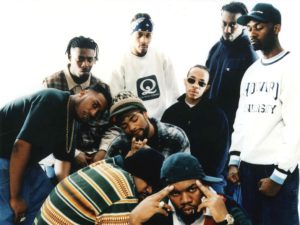- 26 July 2024
- 878
Method Man on ‘Once Upon a Time in Shaolin’ and Wu-Tang Clan

Introduction
In the annals of hip-hop history, few groups have had the enduring impact of the Wu-Tang Clan. Known for their innovative sound, raw lyricism, and a unique blend of individual talents, the group has carved out a legacy that transcends music. One of the most intriguing chapters in their storied career is the creation of the album ‘Once Upon a Time in Shaolin.’ In this article, we delve into Method Man’s insights on this enigmatic project, exploring its significance and the broader context of Wu-Tang Clan’s influence.
The Genesis of ‘Once Upon a Time in Shaolin’
‘Once Upon a Time in Shaolin’ is not just an album; it is a piece of art that symbolizes the Wu-Tang Clan’s philosophy and their approach to music. Conceived by producer Cilvaringz and RZA, the album was recorded in secret over a six-year period. Unlike traditional releases, only one physical copy of the album was produced, making it a unique artifact in the music industry.
Method Man, a core member of the Wu-Tang Clan, has often spoken about the album’s creation and its purpose. According to him, the project was designed to challenge the conventional norms of music distribution and consumption. By creating a single-copy album, the group aimed to restore the value of music as an art form, akin to a priceless painting or sculpture.
Method Man’s Perspective

Method Man’s perspective on ‘Once Upon a Time in Shaolin’ is both insightful and reflective. He views the album as a statement against the commodification of music in the digital age. In various interviews, he has emphasized the importance of preserving the artistic integrity of music, which often gets lost in the era of streaming and mass production.
“The album is a testament to the Wu-Tang Clan’s commitment to art,” Method Man has said. “It’s not just about making music; it’s about creating something that stands the test of time.”
The Auction and Controversy

In 2015, ‘Once Upon a Time in Shaolin’ was sold at auction to Martin Shkreli, a pharmaceutical executive notorious for his controversial business practices. The sale sparked widespread debate and criticism, with many fans and critics questioning the ethics of selling a single-copy album to an individual with such a contentious reputation.
Method Man, along with other members of the Wu-Tang Clan, expressed their discontent with the sale. However, he also highlighted the broader message behind the album. “The controversy surrounding the sale only underscores the album’s purpose,” he noted. “It challenges people to think about the value of music and art in our society.”
Legacy and Impact
Despite the controversy, ‘Once Upon a Time in Shaolin’ has left an indelible mark on the music industry. It has sparked discussions about the value of music, the role of artists, and the future of music distribution. Method Man believes that the album’s legacy will continue to influence artists and fans alike, encouraging them to rethink their relationship with music.
“The album is a wake-up call,” Method Man has stated. “It’s a reminder that music is more than just a product; it’s an expression of creativity and culture.”
Wu-Tang Clan’s Enduring Influence

The Wu-Tang Clan’s influence extends far beyond ‘Once Upon a Time in Shaolin.’ Since their debut in the early 1990s, the group has been a driving force in the evolution of hip-hop. Their innovative approach to music, characterized by gritty beats, intricate lyricism, and a fusion of various musical genres, has inspired countless artists across the globe.
Method Man, as one of the group’s most prominent members, has played a crucial role in shaping the Wu-Tang Clan’s legacy. His distinctive voice, lyrical prowess, and charismatic presence have made him a standout figure in the world of hip-hop. Over the years, he has also ventured into acting, further solidifying his status as a versatile and influential artist.
Conclusion
‘Once Upon a Time in Shaolin’ is more than just an album; it is a cultural artifact that encapsulates the Wu-Tang Clan’s philosophy and artistic vision. Through this project, Method Man and his fellow group members have challenged the conventional norms of music distribution, sparking important conversations about the value of art in the digital age.
As we reflect on the legacy of ‘Once Upon a Time in Shaolin’ and the enduring influence of the Wu-Tang Clan, it becomes clear that their impact on the music industry is profound and far-reaching. Method Man’s insights into the album provide a deeper understanding of its significance, reminding us of the power of music to inspire, challenge, and transform.
In the ever-evolving landscape of hip-hop, the Wu-Tang Clan remains a beacon of creativity and innovation. Their commitment to artistic integrity and their willingness to push boundaries continue to resonate with fans and artists alike. As we look to the future, the legacy of ‘Once Upon a Time in Shaolin’ will undoubtedly endure, serving as a testament to the Wu-Tang Clan’s indomitable spirit and their unwavering dedication to the art of music.

